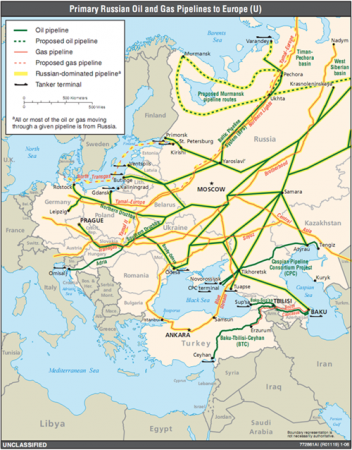The Economist‘s Technology Quarterly includes a good article on engineered geothermal systems (EGS) – a type of power plant where holes are drilled into the hot granite about 3-4km below the surface of the Earth and water is pumped through which is then used to drive turbines. The advantage, when compared to conventional geothermal systems, is that EGS can theoretically be used anywhere. The amount of energy available is enormous:
According to “The Future of Geothermal Energyâ€, a report issued by the Massachusetts Institute of Technology (MIT) in 2007, the thermal energy available in America in rocks 3-10km (1.9-6.2 miles) beneath the Earth’s surface is nearly 140,000 times greater than its annual energy consumption. Conservative estimates suggest just 2% of that energy could be tapped by EGS in practice, but even that would be far more than is needed to supply all of America’s electricity. Tapping it will, however, require both technical and economic hurdles to be overcome.
Right now, the total global geothermal capacity is 10.7 gigawatts, producing 67,250 gigawatt hours (GWh) per year. That’s equivalent to about ten large nuclear reactors. With the deployment of EGS, those figures could be increased enormously.
Engineered geothermal systems (sometimes called ‘enhanced’ geothermal systems) do have limitations. While conventional geothermal power in the United States costs about 10¢ per kilowatt-hour (kWh), comparable to oil and gas, EGS is more like 19¢ per kWh. It should be possible to bring that down somewhat with increased scale and experience. Also, whereas the 10¢ for coal power fails to take into account the climatic harm associated with that power source, EGS produces no greenhouse gas emissions and emits no atmospheric toxins. Another limitation of EGS is the production of earthquakes, though supporters argue that with proper management it can be ensured that these are always too small to cause harm.
EGS also has the major advantage that it provides a consistent baseload level of power output – night and day. That stands out particularly in comparison to options like wind power and solar, where energy output varies throughout the day and year. Because drilling for EGS requires much of the same equipment and expertise as drilling for oil and gas, it could also serve as a mechanism to shift toward a post-fossi-fuel global economy, without wasting the capital and expertise that we have already assembled. Doone Wyborn, chief scientist of Geodynamics, stresses this point: “There are thousands of wells being drilled for oil across the world every year. I imagine that in a couple of decades all of those drilling rigs that are now redundant, because we’ve run out of oil, will be drilling geothermal wells instead.†Hopefully, that can happen sooner than in a couple of decades, and well before humanity has burned up all the world’s fossil fuels.
Google.org – the charitable arm of the search giant – is one backer of EGS, including in Canada.


